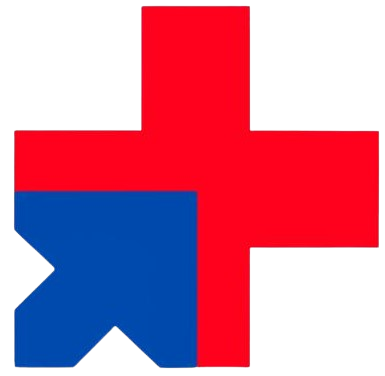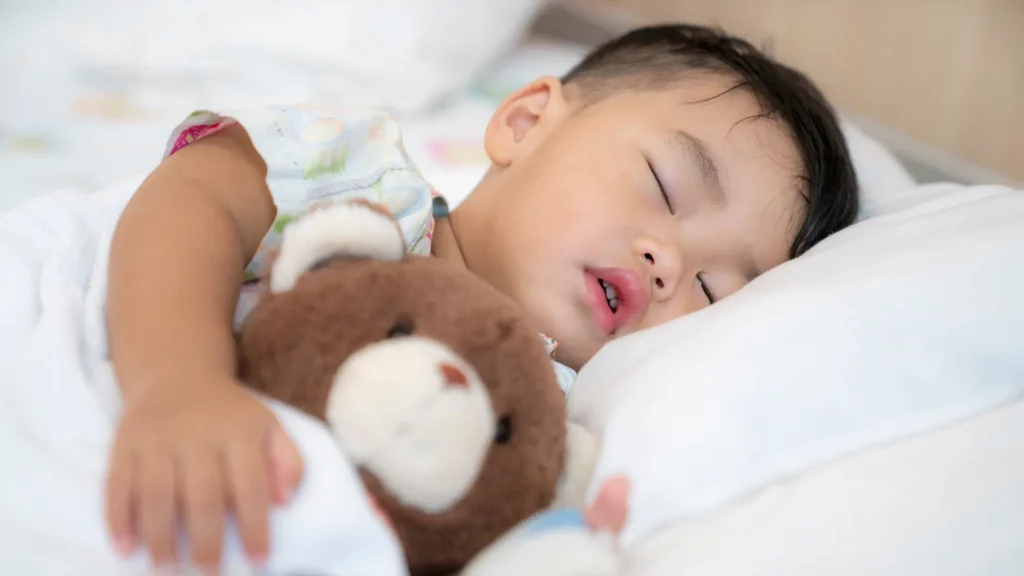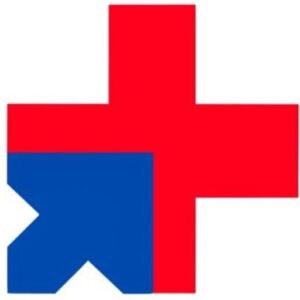Parents and caregivers often find themselves on the lookout for signs of sickness in their little ones. Recognizing and understanding childhood illnesses are critical steps in ensuring the well-being of children. Quick identification can lead to prompt treatment, reducing the discomfort for the child and preventing the spread of diseases.
This article shines a light on the 10 most common conditions in children, providing insights into each illness. These range from the all-too-familiar common cold to the less frequent but equally important conditions such as asthma or eczema.
Familiarizing ourselves will equip us with the knowledge that not only helps in managing symptoms, but also prepares us to act swiftly when our children’s health is at stake.
Today, we will delve into each condition, discussing symptoms, treatments, and when it’s crucial to seek medical attention. With the goal of helping parents to be better informed and make better decisions.
As always, this articles serves as a guide. Please consult your family physician for more specified diagnosis.
1. Common Cold

The common cold is a viral infection that primarily affects the nose and throat. While it’s generally harmless, it can be particularly uncomfortable, especially for children.
Symptoms of Common Cold in Children:
- Blocked or runny nose
- Watery eyes
- Sneezing
- Coughing
- Mild fever
Common Treatments for Common Cold:
- Rest to strengthen the immune system
- Plenty of fluids to stay hydrated
- Saline nasal drops to relieve nasal congestion
- Acetaminophen or ibuprofen for fever (consult with a pediatrician before use)
Children often catch colds due to their developing immune systems. While adults may experience two to three colds annually, children can have as many as six to ten. Recognizing and treating the symptoms early helps ensure a faster recovery and greater comfort for the child.
2. Bronchitis/Bronchiolitis
Bronchitis and bronchiolitis are respiratory conditions that often affect children. Bronchitis is an inflammation of the large airways known as bronchi, typically caused by a virus or bacteria. Bronchiolitis, on the other hand, affects the smaller airways, called bronchioles, and is usually caused by a specific virus like Respiratory Syncytial Virus (RSV).
Differences:
- Bronchitis is more common in older children and adults.
- Bronchiolitis generally affects infants and young children.
Symptoms in Children:
- Wheezing
- Rapid or labored breathing
- Lethargy or fatigue
- Coughing, sometimes producing mucus
Treatments:
While both conditions can be alarming, they often resolve with supportive care such as:
- Ensuring adequate hydration
- Using a humidifier to ease breathing
- Rest for recovery
For persistent symptoms or severe cases, it’s essential to seek medical advice for potential additional interventions.
3. Stomach Flu (Gastroenteritis)
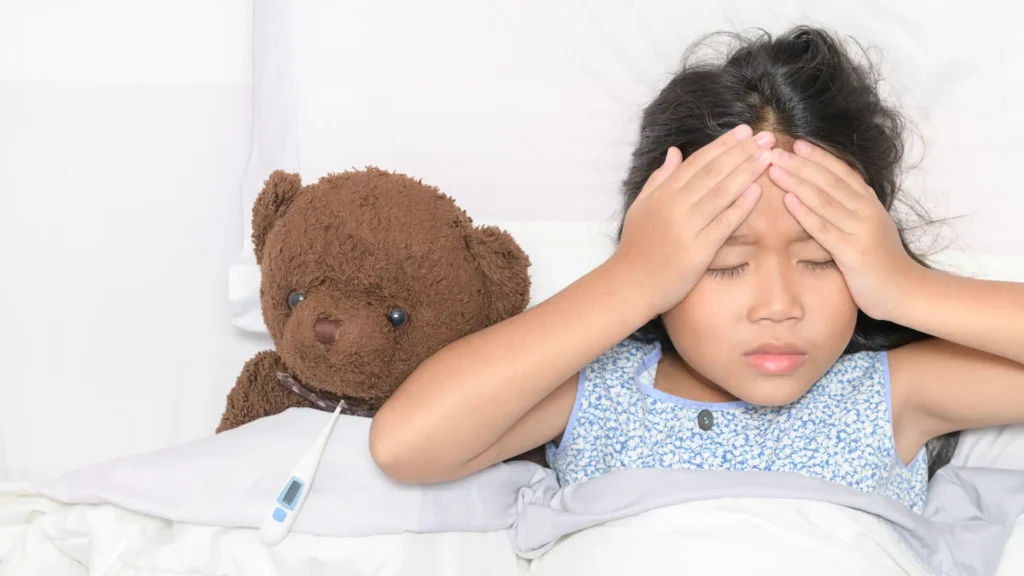
Stomach flu, also known as gastroenteritis, is an infection that causes inflammation of the stomach and intestines. This illness is especially common in children and can lead to dehydration if not managed properly.
Symptoms of Stomach Flu (Gastroenteritis) in Children:
- Nausea and vomiting
- Diarrhea with smelly or watery stools
- Muscle aches and abdominal pain
- Possible fever
Common Treatments for Stomach Flu (Gastroenteritis):
- Plenty of fluids to prevent dehydration
- Oral rehydration solutions (ORS)
- Bland diet once vomiting subsides
- Rest to support recovery
Children with gastroenteritis usually get better with home care, but persistent symptoms may require medical attention.
4. Hand, Foot and Mouth Disease (HFMD)
Hand, foot and mouth disease (HFMD) is a contagious viral illness common in young children. It primarily affects children under the age of 5 but can also occur in older children and adults.
Symptoms of HFMD
HFMD is characterized by:
- Blisters or rashes on the palms, soles, and sometimes the buttocks
- Painful mouth ulcers
- Fever and sore throat
Children with HFMD typically display these symptoms, which can be distressing due to discomfort and pain from the sores.
Treatment for HFMD
If your child has been diagnosed with HFMD, there are several things you can do at home to help alleviate their symptoms:
- Give their child plenty of fluids to prevent dehydration
- Offer soft foods that are easy to swallow
- Use over-the-counter pain relief medications suitable for children, like ibuprofen or acetaminophen, but avoid aspirin due to the risk of Reye’s syndrome
Prevention of HFMD
Contact with blister fluids and saliva can spread the virus, so maintaining good hygiene is crucial for prevention. Here are some steps you can take to reduce the risk of HFMD:
- Wash hands thoroughly with soap and water frequently, especially after using the toilet or changing diapers
- Avoid close contact with individuals who have HFMD
- Clean and disinfect frequently touched objects and surfaces regularly
If your child has HFMD, keeping them home from school or daycare helps prevent the spread to other children.
5. Febrile Seizures
Febrile seizures are convulsions that can occur in young children, typically aged six months to five years, due to a rapid rise in body temperature. They often coincide with childhood illnesses such as ear infections or roseola.
Symptoms of Febrile Seizures
Recognizing the symptoms of febrile seizures is vital. These may include:
- Unconsciousness
- Stiffened body
- Falling down or jerking limbs
- Clenched jaw, rolling eyes
While these symptoms can be alarming, most febrile seizures end without treatment and don’t cause any other health problems.
However, managing febrile seizures is crucial for child safety. If a seizure lasts more than five minutes or is accompanied by breathing problems, immediate medical help should be sought. Always consult with your healthcare provider for advice on how to handle this situation.
6. Chickenpox
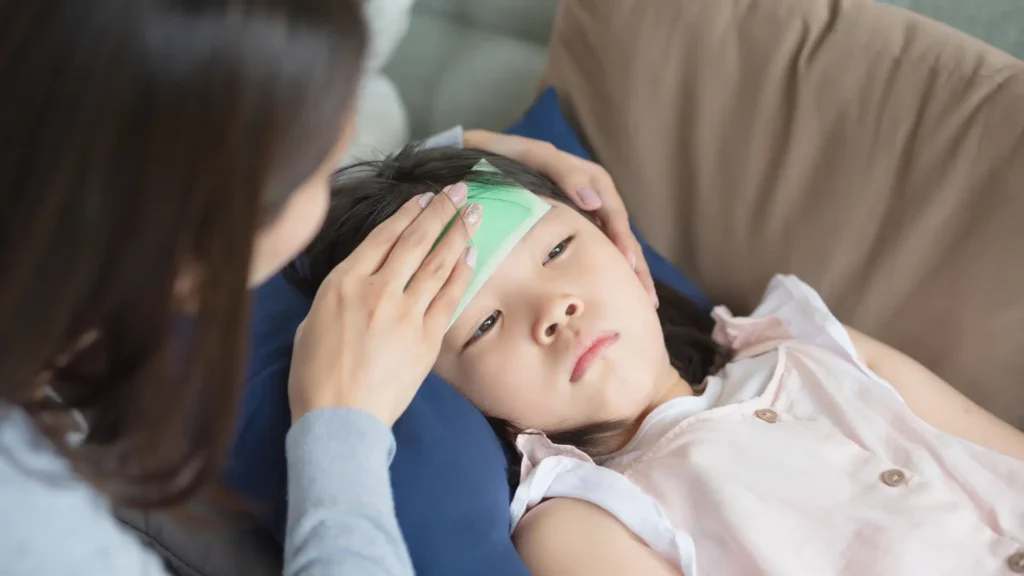
Chickenpox is a highly contagious viral infection that primarily affects children. It’s caused by the varicella-zoster virus and was once a common childhood illness before the introduction of the chickenpox vaccine.
Symptoms of Chickenpox in Children:
- Fever: Usually the first sign, preceding the rash by 1-2 days.
- Itchy Rash: Begins as small red spots that develop into blisters.
- Blisters: These burst and then crust over, potentially leading to scarring if infected.
Common Treatments for Chickenpox:
- Rest: Essential for recovery.
- Calamine Lotion: Soothes itching.
- Acetaminophen: For fever reduction (avoid aspirin due to Reye’s syndrome risk).
- Hydration: Important to prevent dehydration from fever and loss of fluids through blisters.
Vaccination is key in preventing chickenpox, and those with the illness should avoid contact with others to stop it from spreading.
7. Eczema
Eczema, a chronic skin condition, is another common childhood illness. This condition manifests as an itchy, red rash that can appear on any part of the body. In children, the face, limbs and trunk are most commonly affected.
Symptoms of Eczema in Children
The symptoms of eczema in children include:
- Red rash: This is often itchy and may be found on various parts of the body.
- Scratching: Children with eczema often scratch the affected area.
- Complaints of itch: Your child may complain about itching on different parts of their body.
Treatment for Eczema in Children
Eczema treatment aims to soothe the symptoms and prevent flare-ups. This includes:
- Moisturizing creams: Regular use can help keep the skin hydrated and reduce itching.
- Topical corticosteroids: These are used to reduce inflammation during flare-ups.
- Avoidance of triggers: Identifying and avoiding triggers like certain fabrics or detergents can prevent flare-ups.
Recognizing these symptoms and seeking appropriate treatment can significantly improve a child’s comfort and quality of life.
8. Asthma
Asthma is a chronic respiratory condition that inflames and narrows the airways, making breathing difficult. This condition is marked by recurrent episodes of wheezing, chest tightness, shortness of breath, and coughing.
Symptoms of Childhood Asthma
Children with asthma might experience:
- Frequent wheezing or a whistling sound while breathing
- Chest tightness or discomfort
- Difficulty in breathing
- Persistent coughing, particularly during physical activity or at night
Management of Childhood Asthma
Management of childhood asthma varies based on severity. Here are some approaches:
- Mild to moderate symptoms: These may be controlled with quick-relief inhalers, which dilate the bronchial tubes, allowing easier breathing.
- Severe cases: For severe cases, long-term control medications such as corticosteroids may be prescribed to reduce inflammation in the airways over time.
9. Allergic Rhinitis (Allergies)
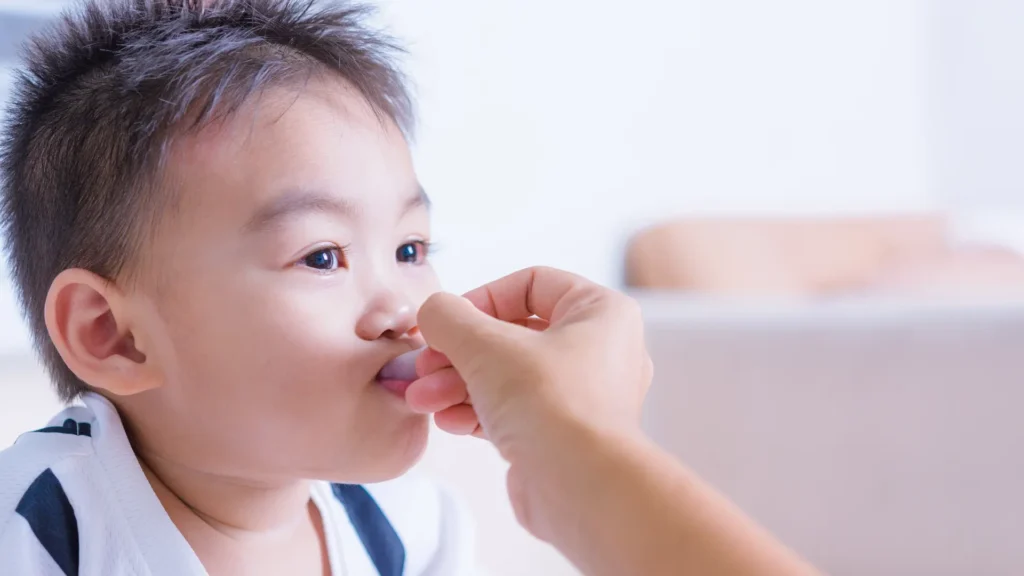
Allergic rhinitis, often known simply as allergies, is a common condition in children that affects the nose and sinuses. When a child with allergic rhinitis encounters an allergen, such as pollen or pet dander, their immune system overreacts, leading to symptoms like:
- Constant sneezing
- Runny or stuffy nose
- Itchy eyes and throat
- Disrupted sleep due to discomfort
To manage these symptoms and provide relief, treatments for allergic rhinitis in children often include:
- Oral antihistamines to reduce sneezing and itchiness
- Nasal sprays that help decrease inflammation and congestion
- Avoidance of known allergens where possible
- Use of high-efficiency particulate air (HEPA) filters at home to reduce exposure to dust mites and other airborne allergens
Parents should consult a healthcare provider before starting any treatment to ensure it is appropriate for their child’s age and medical condition.
10. Constipation
Constipation in children can be both uncomfortable and concerning for parents. This common childhood illness is characterized by infrequent or difficult bowel movements.
Symptoms often include:
- Passing fewer stools than usual
- Hard, dry stools that may be painful to pass
- A swollen belly and discomfort
- General irritability due to abdominal discomfort
For treatments, several options can help alleviate constipation:
- Encouraging the child to drink more fluids, especially water
- Increasing fiber intake through fruits, vegetables, and whole grains
- Physical activity to stimulate bowel movements
- In some cases, pediatricians might recommend over-the-counter stool softeners appropriate for children
Always consult a healthcare professional before starting any treatment to ensure it is safe and suitable for your child’s specific needs.
Prevention Tips for Childhood Illnesses

Preventing childhood illnesses often starts with two key strategies: creating a healthy home environment and teaching children good hygiene practices.
1. Healthy Home Environment
This includes:
- Regular cleaning to eliminate dust and potential allergens
- Using high-efficiency particulate air filters to reduce the presence of mites
- Maintaining smoke-free spaces to protect children’s respiratory health
- Proper ventilation also plays a crucial role in preventing the spread of infections.
2. Good Hygiene Practices
Encouraging:
- Frequent handwashing with soap and water, especially before meals and after using the bathroom, can greatly reduce the transmission of viruses and bacteria.
- Teaching children to cough or sneeze into their elbow rather than their hands helps prevent the spread of respiratory infections like the common cold or flu.
By integrating these prevention tips into daily routines, parents can significantly lower the risk of common childhood illnesses.
When to Seek Medical Attention for Childhood Illnesses

Seeking medical attention for childhood illnesses is crucial when certain symptoms arise. Parents and guardians should remain alert and ready to contact a healthcare professional if they observe:
- High fever that does not reduce with treatment
- Difficulty breathing or rapid breathing
- Unusual lethargy or drowsiness
- Severe abdominal pain
- Persistent vomiting or dehydration signs
- Rashes that are rapidly spreading or associated with fever
- Seizures or convulsions
Immediate medical attention can prevent complications and ensure the well-being of the child. Always err on the side of caution and consult with a doctor if the child’s health seems to be getting worse or if symptoms persist.
Conclusion
Understanding the most common conditions in children is important for every parent. It gives them important information to identify and manage childhood illnesses. With this knowledge, parents can take quick action to ensure their child receives appropriate treatment.
Knowing whether a runny nose is just a common cold or a symptom of allergic rhinitis is crucial for your child’s well-being. Recognizing signs of constipation or asthma allows for early intervention, preventing discomfort and distress for your child.
But it’s not just about recognizing illnesses. This knowledge also highlights the importance of preventive measures. Keeping a clean home, promoting good hygiene habits, and encouraging a balanced diet are all beneficial for your child’s health.
Fighting childhood illnesses is not something that one person does alone. Parents, healthcare professionals, schools, and communities all have important roles to play. It’s about creating a supportive network that promotes children’s health.
Remember, knowledge is power when it comes to managing your child’s health. So stay informed, watchful, and proactive in ensuring your child’s well-being. Your child’s health is in your hands – take charge and guide them towards a healthier life!
